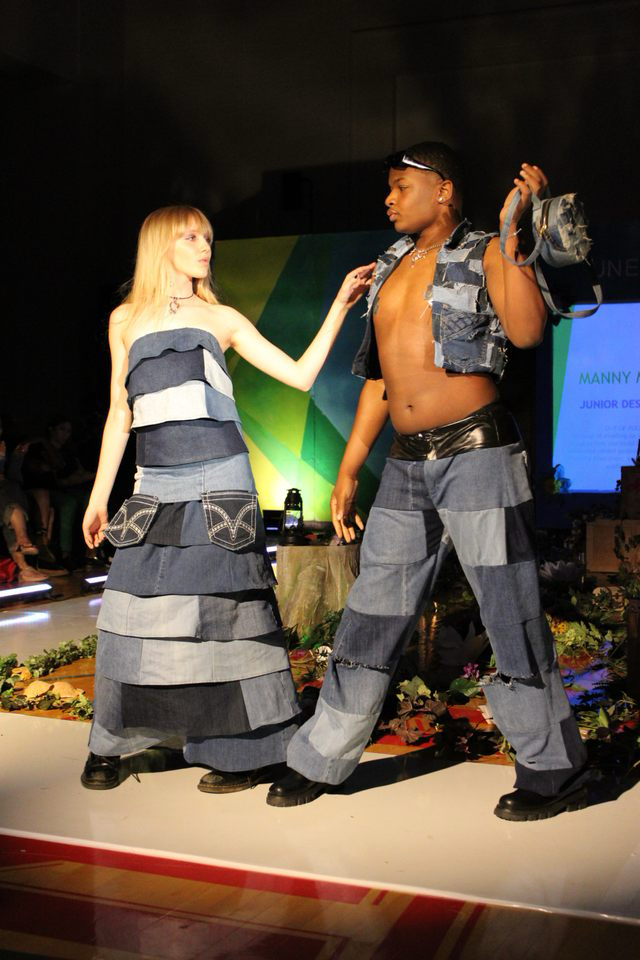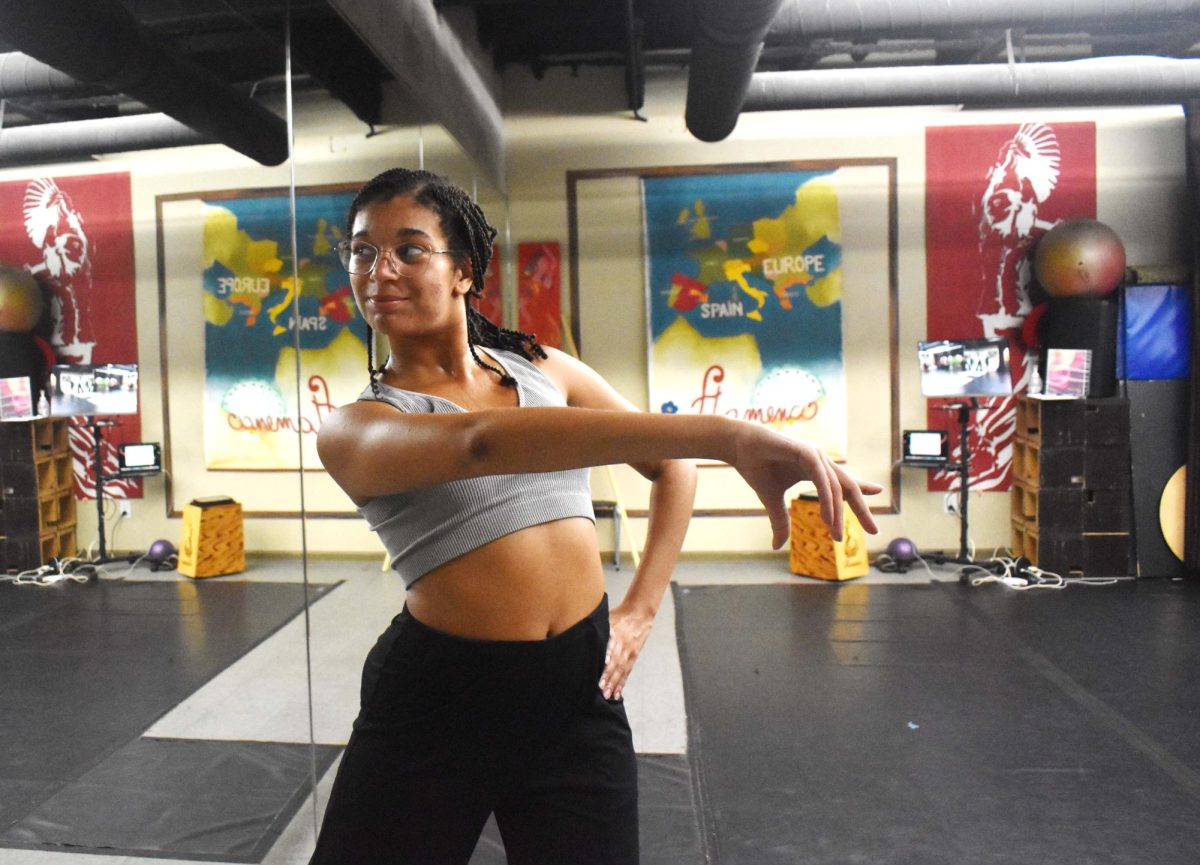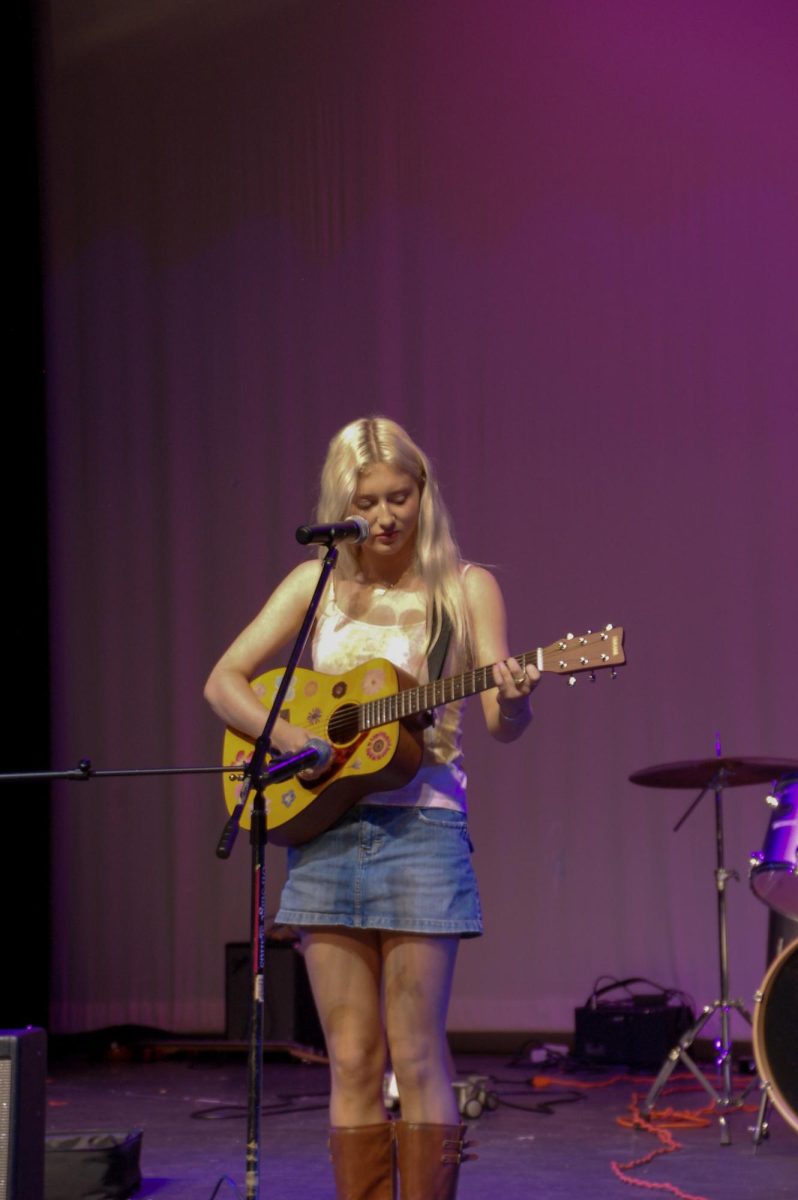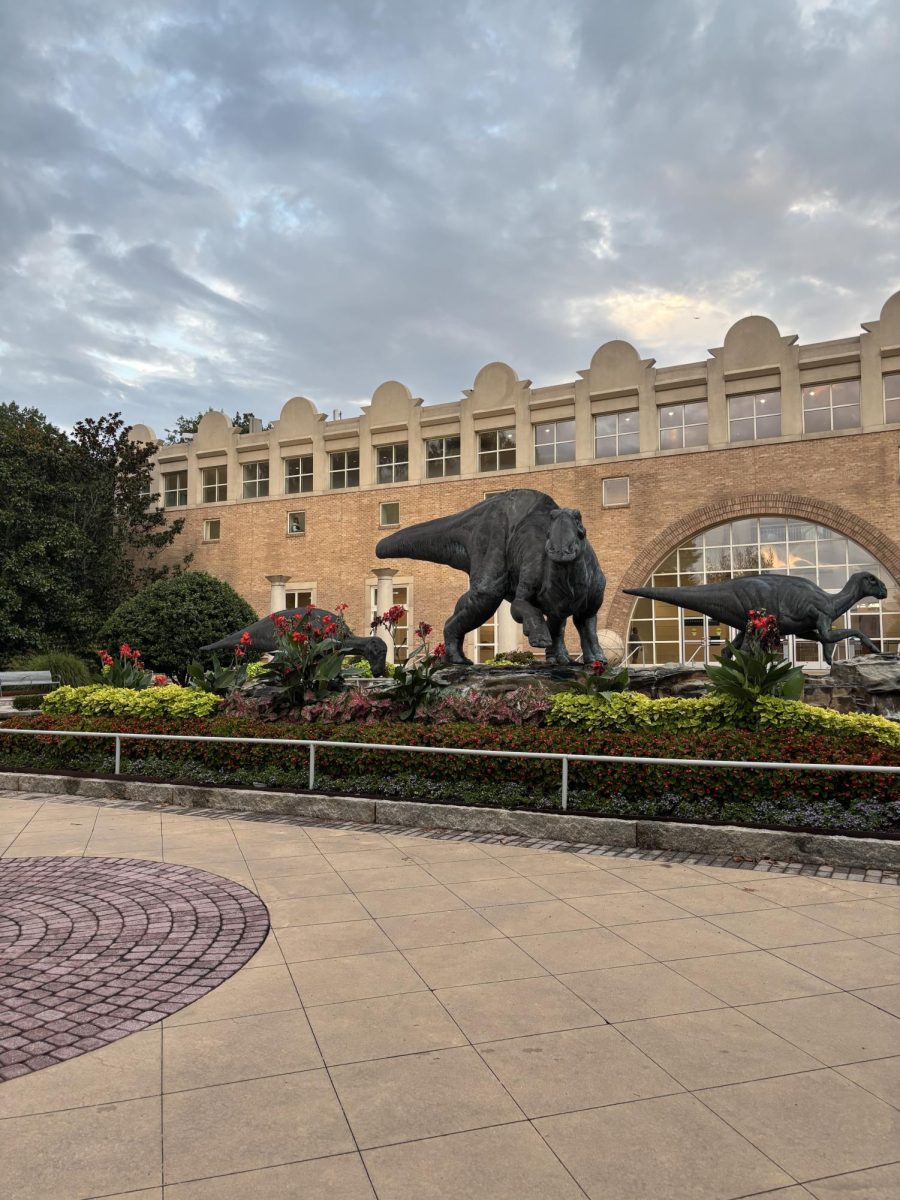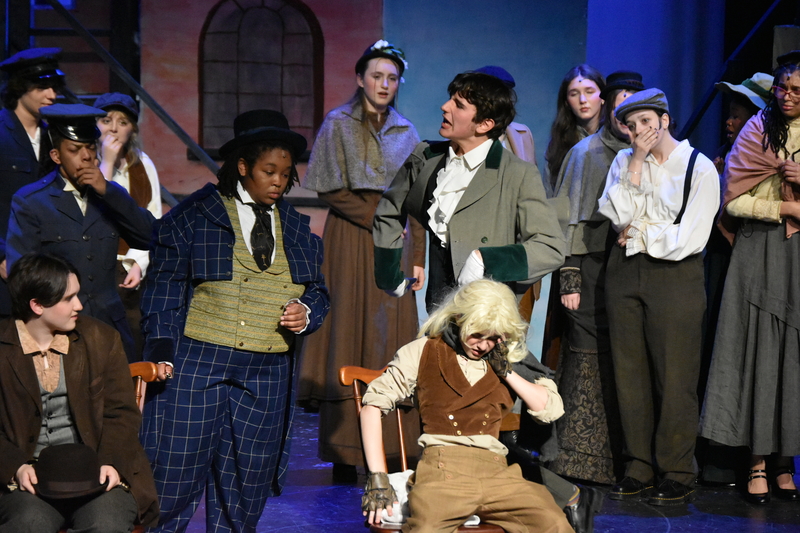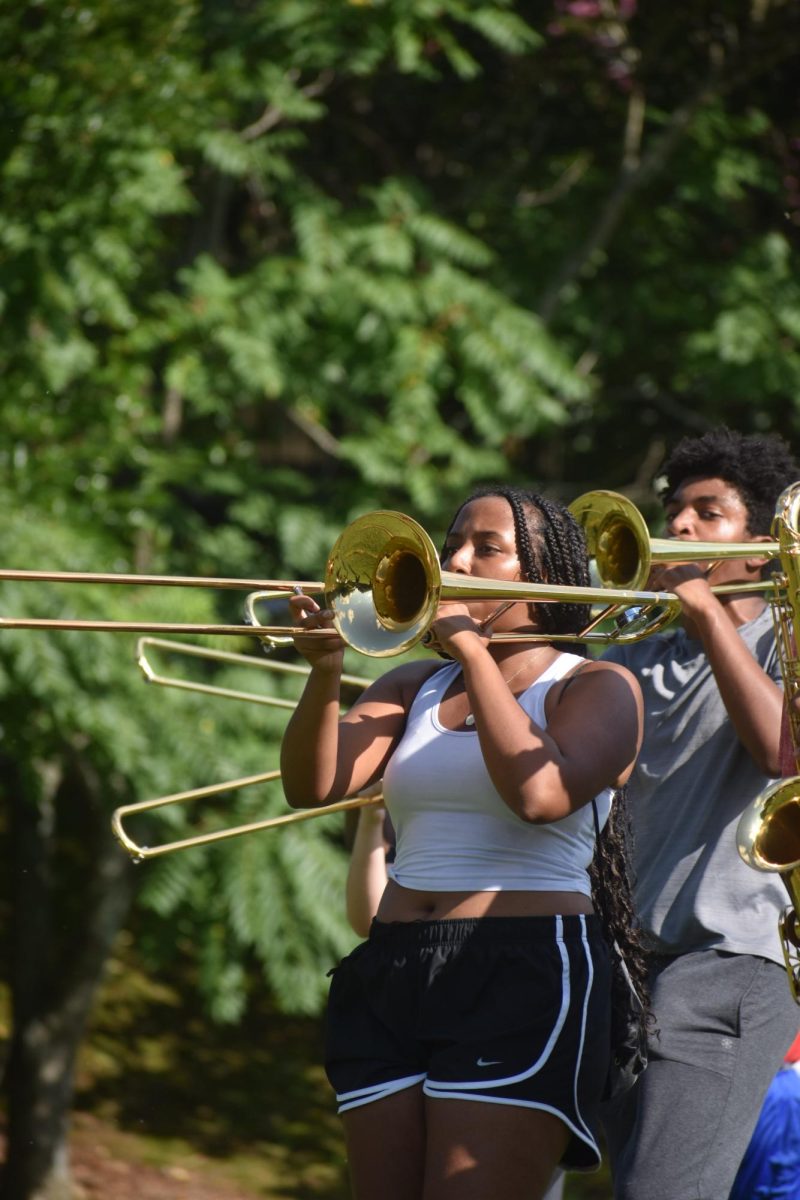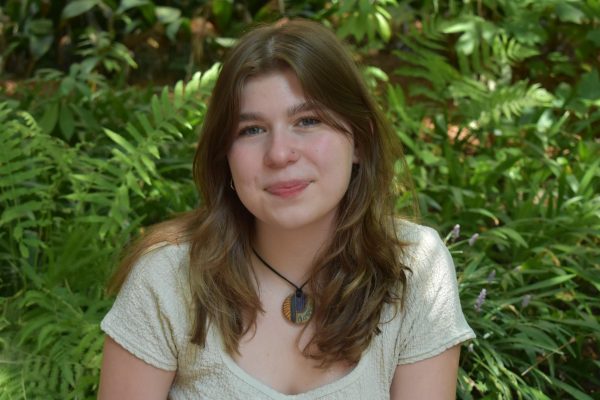Dogs, dolls, rollerblades and many other intricately designed and strategically planned pieces walked the runway of this year’s fashion show, ‘Une Belle Revolution.’
Inspired by the show’s theme, enchanted forest, designers have been preparing for this show all year, designing, sewing and fitting three or more crafted pieces that represent their unique points of view.
“It’s an all-year process,” fashion teacher Kottavei Williams said. “We come back as a group and collectively decide on a broad theme for the show and that influences the tickets, the set, the website and everything. The broad theme this year was an enchanted forest … then, the designers start coming up with their individual concepts about their collections, what they want to make, what they’re inspired by and then they make the patterns for it. Come spring, they start sewing and fitting them on the models.”
Junior Chase Hopkins completed her first fashion show with her work centered around an architectural theme, as displayed by her most challenging piece, a wood skirt.
“I made three garments all under the theme of architecture, meaning that I had elements of wood and metal in my designs,” Hopkins said. “For my clothing items, I spent the whole year working on the paper designs, patterns, fabric selection, mock ups and finals. For the items I had that weren’t made of cloth, I worked with the people in the scene shop to have their help in constructing the rings I made for my skirt, and then I assembled them a few weeks prior to the show, which was the most challenging part.”
Hopkins saw the fashion show as a success, drawing a large crowd and effectively showcasing their designs on the runway despite a few challenges encountered throughout the show.
“The fashion show went very well with a great turnout,” Hopkins said. “There were a few technical difficulties regarding the slides that were shown and the music that was played, but those were very small errors.”
The fashion department also faced challenges in constructing the runway before the show without the support of art teacher John Brandhorst who was unable to help with the show this year.
“This year was a little difficult because Mr. Brandhorst was out so we really missed him,” Williams said. “He really helps us a lot with the set, but he left me with good students; good techs that were able to help install the show.”
Williams said the quality of designs this year was the best yet, showcasing many unique and creative ideas that she has never seen before.
“Every year is getting better and better,” Williams said. “I think the quality of clothes this year and the creativity and design was amazing. This year, we had a dog on the runway. We had roller skates. Last year we had the orchestra playing live. Next year, who knows what’s going to end up on the runway? We’re always trying to make it better than the year before.”
Another essential element to the shows is the models, who spend months preparing before the show to perfect their walk and attend fittings. Junior Ella Thornbury, a model for the second year in a row, said she hopes she can participate in a third year because of the enriching atmosphere created during the show.
“My favorite thing about the fashion show was definitely getting to talk to people that I normally wouldn’t have backstage,” Thornbury said. “It’s such a fun experience getting to talk to everybody because everybody’s kind of nervous and they’re all going through the exact same thing. It’s a very creative community.”
Thornbury particularly loves the wild atmosphere backstage during the show as designers and models quickly rush to change into their garments.
“It was in the black box, so it’s a ton of people squeezed in this very small space, but it’s a fun, chaotic energy,” Thornbury said. “Everybody’s playing games on the side and everybody’s rushing to do their quick changes and helping people with their makeup. It’s just a lot of fun.”
Williams said she is approaching next year’s fashion show with the same attitude as her 12 previous shows, which is to better the quality while ensuring each individual is able to showcase their personalities through unique pieces.
“[My goal is to] make sure everyone is being fulfilled in their expression of their creativity, to make sure it’s a quality show, to make sure we get the audience and the crowd we want to come out … and to make sure the space is transformative in a way it feels bigger than what it actually is,” Williams said.

